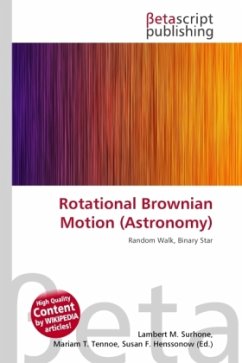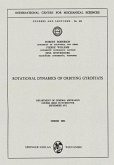High Quality Content by WIKIPEDIA articles! In astronomy, rotational Brownian motion refers to the random walk in orientation of a binary star's orbital plane, induced by gravitational perturbations from passing stars. Rotational Brownian motion was first discussed in the context of binary supermassive black holes at the centers of galaxies. Perturbations from passing stars can alter the orbital plane of such a binary, which in turn alters the direction of the spin axis of the single black hole that forms when the two coalesce. Rotational Brownian motion is often observed in N-body simulations of galaxies containing binary black hole.. The massive binary sinks to the center of the galaxy via dynamical friction where it interacts with passing stars. The same gravitational perturbations that induce a random walk in the orientation of the binary, also cause the binary to shrink, via the gravitational slingshot. It can be shown that the rms change in the binary's orientation, from the time the binary forms until the two black holes collide, is roughly
Bitte wählen Sie Ihr Anliegen aus.
Rechnungen
Retourenschein anfordern
Bestellstatus
Storno








